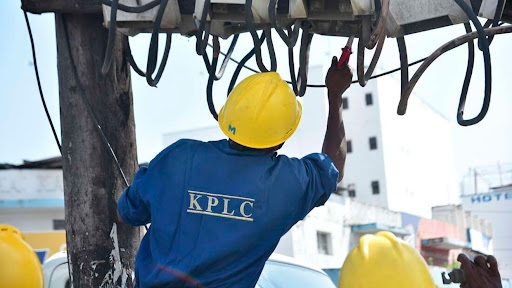

A parliamentary committee has unlocked Sh600 million to help the Rural Electrification and Renewable Energy Corporation and Kenya Power restore electricity in northern Kenya.
The Public Investments Committee on Commercial Affairs and Energy convened a roundtable meeting where the government pledged to provide additional funds to address the power crisis in the region.
The committee, led by Pokot South MP David Pkosing, called the meeting to resolve a stand-off between Kenya Power and Rerec over an unpaid Sh30 billion debt.
Kenya Power had argued that the debt made it difficult to operate and maintain 56 mini-grids supplying electricity to Turkana and the Northeastern counties. Most of the generators had stalled due to a lack of lithium batteries and insufficient fuel storage capacity.
The Energy ministry disclosed that 13 mini-grids were in critical condition, requiring urgent repairs estimated at Sh600 million, while another 10 needed complete replacement at a cost of Sh1.3 billion.
National Treasury PS Chris Kiptoo said they had agreed on a repayment plan with the Energy ministry to stop the debt from increasing further.
He argued that following a recent tariff review, the annual allocation for rural electrification had been increased to Sh2.5 billion, reducing the deficit to Sh25 billion.
The Treasury proposed raising the exchequer allocation to Sh1.6 billion in the current budget, which, alongside tariff-based recovery, would cut the deficit by Sh7.3 billion. Kiptoo added that the balance of Sh23.7 billion would be paid over the next five years from the proceeds of the Epra levy.
Following consultations, it was agreed that Rerec would be provided with Sh4.2 billion to replace the dead and rundown mini-grids, of which Sh600 million would be provided immediately. This Sh600 million is part of a Sh3 billion allocation for this year (which also includes Sh1.4 billion from the levy), while the remaining Sh1.2 billion would be a priority in the next budget.
MPs rejected the Treasury’s proposal to raise Sh1 billion from budget reallocations, arguing that it would negatively affect various ongoing electrification projects. To prevent further deficits, Kiptoo suggested amending the Energy Act to allow the Epra levy to cover maintenance costs, which is currently prohibited.
The PS disclosed that Sh8 billion is collected annually through the Epra levy, which funds Rerec’s development and recurrent expenses.
He also opposed the ministry's proposal for offsetting the loans as a solution, insisting on structured repayment channels.
Energy PS Alex Wachira had suggested that since Kenya Power owed the government Sh70 billion, the Treasury offset the debt from the amount. He emphasised that Kenya Power had been maintaining the lines despite the outstanding debt, but this was now proving unsustainable.
Kiptoo assured that the funds would be disbursed within two months, enabling Kenya Power to proceed with repairs and supply power to Northern Kenya.
Lawmakers pressed for clarity on the payment timeline.
"We need to know exactly when the money will be available so that Kenyans can start benefiting," insisted MP Mwangi Kiunjuri.
Nairobi Woman representative, Esther Passaris, demanded a detailed payment plan to settle Kenya Power’s debt, prompting the committee to schedule site visits before and after October 21 to assess the situation.
Kiptoo explained that the Treasury would use part of the Energy and Petroleum Regulatory Authority levy to gradually offset the debt over five years, with Sh5.6 billion allocated this year.
Wachira defended the pass-through cost mechanism (direct transfer of costs from suppliers to the consumer or another entity in the chain), stating it was necessary to prevent Kenya Power’s debt from escalating further, though this would mean a slight increase in consumer bills.
Wachira reiterated the need to revise the levy’s usage to cover operations and maintenance, ending Kenya Power’s burden of maintaining assets without reimbursement.
MPs, however, resisted reallocating funds from other projects.
"We are opposed to reallocation—find additional resources instead," Kiunjuri said.
Pkosing noted that while Rerec required Sh5.2 billion, it would have to make do with Sh4.2 billion.
Instant Analysis
With the Sh600 million now secured, the focus shifts to implementation, ensuring that power is restored to the neglected regions. The Treasury’s structured repayment plan and proposed legal amendments aim to prevent future crises, though disagreements over funding sources linger. For now, hope is on the horizon for residents who have long endured darkness, waiting for the generators to roar back to life.












